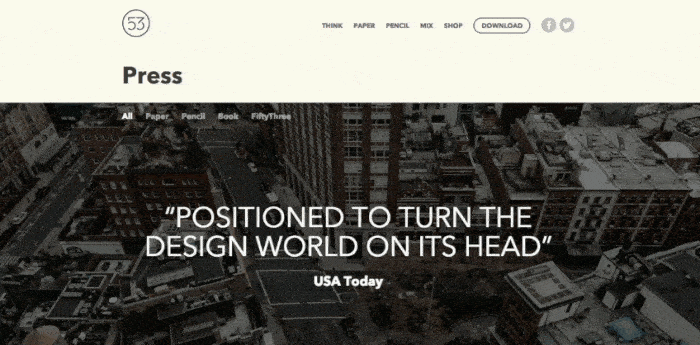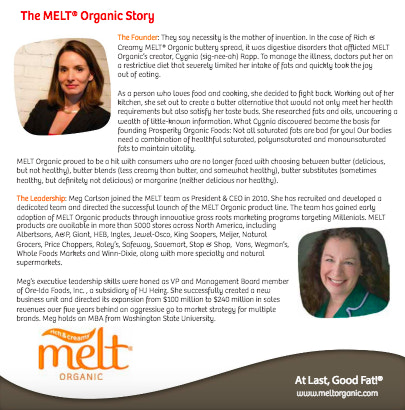Time to Shine: How to Create a Press Kit That Gets Publicity in 2021
Getting your business or product featured in a major publication is huge. Imagine the largest publication in your industry, or even a local news affiliate, giving you free press. Now imagine the kind of exposure and traffic that would bring to your business.
Good press coverage allows you to borrow the trust of those publications. It gives your online store social proof when you place their logos on your website. The result? More sales.
How can business owners make it easy for websites, magazines, and publishers to write a story about their business?
With an amazing press kit.
Create your press kit ?

Free: Press Release Template
To help you get started, we put together this template to help you structure your story using a common press release format. You can replace each component with your own information and adapt it according to your needs.
Get the press release template delivered right to your inbox.
Almost there: please enter your email below to gain instant access.
We’ll also send you updates on new educational guides and success stories from the Shopify newsletter. We hate SPAM and promise to keep your email address safe.
What is a press kit?
A press kit, also known as a media kit, is a page on your website that contains resources and information for reporters and publishers. The best press kits make it easy for reporters to learn about a product and brand, and to access photos and marketing materials they can use in a story.
By providing a press kit, you’re saying, “Hey, we love press. Here’s everything you need to put your story together, as well as how to reach us.”

A press kit isn’t only for reporters or major publications, either. Anyone who wants to talk about or promote your business has the tools they need to do it effectively. Whether that’s someone with a podcast, someone with a personal blog, or even just someone sharing your story in an online community.
Press validates a brand and what customers have heard through word of mouth
But even an amazing press pack doesn’t guarantee press for your business; it just makes getting press a bit easier. When you’re networking and reaching out to publications, you’ll always have your media kit to refer to and share with reporters. When you do some of the work for reporters upfront, they’ll be more receptive to your pitch for press. Plus, hey, it looks professional.
What digital press kits are used for
Digital press kits are a common and convenient format to create and distribute content for promotional purposes, especially in the ecommerce space. You can use them to promote:
- Product launches
- Mergers and acquisitions
- Company news
- Special events
Traditionally, a press kit referred to a set of documents, photos, and materials that were sent to media outlets for promotion. Technology has changed how press kits are used. Reporters can now come to you to find information about your company. An electronic press kit (EPK) today lives online as a part of your website. It’s become the standard way to get PR in digital media.
Simply create an easily accessible online press kit page on your website so reporters can find it. You might not want to put a link to it in your main navigation, but it’s a good idea to include a Press, Newsroom or Media Kit link in the footer of your site. Most reporters and publishers will know to look for it there.

You can also put your digital press kit on a flash drive or USB stick. Give these out at events where the media has a presence so they can easily access all the files later on. This is also a good way to distribute high-resolution images without having to download/upload large files.
Press kits are still relevant in 2021 and are a profitable investment for online brands. You can hire a marketing/PR agency to create a press kit for anywhere between $300 and $5,000. Or you can create your own on your company website.
If your online press kit gets media coverage for your brand, it can quickly pay off with new customers and revenue from the added exposure.
What electronic press kits include
What you put in your ecommerce press kit will vary depending on your business and what you have to work with. There are a few essentials that I recommend, as well as a few nice-to-haves if you want to create one of the best press kits out there.
Must-haves
Your story and mission
This is your “why.” Share your story; how your business came to be. Tell reporters a little about yourself and why you’re doing what you’re doing.
Clearly and succinctly lay out what makes your brand special in the category: What are you doing that the competition isn’t? Are you offering the consumer greater value? Are you more sustainable? Are you creating a new category?
In this press kit example from Annmarie Skin Care, the brand shares itsr story, mission statement, and process, which gives press an insight into what it is as a brand.

Company facts
How many customers have you served? How long have you been in business? How many units have you sold? Where’s your business located? Where’s your product manufactured?
Branding
Make it easy for content publishers to use your logo or create graphics using your logo by providing high-resolution options in your digital media kit. Also provide high-quality, high-resolution versions with a transparent background to make your logo and graphics easy to use for nearly any purpose, including print. If applicable, include a download to the raw vector file.
Check out this amazing press kit example from ecommerce brand The Mantry. It has images prepped for print (which requires higher quality photos) and digital, all of which are downloadable from their site.

People on your team
If there’s anyone else working with you, share their story, their role, and how they got involved in your business. If you have an executive team, you’ll want to include their bios here.
Melt Organic weaves its founders’ stories into its overall brand story in the following press kit example:

Press release(s)
If you have current or past press releases, include them. These could be new product announcements, updates about the company, partnerships and collaborations, etc.
Samples of articles and press coverage
Show reporters other articles and publications that you or your business have been featured in or talked about. This can include blog posts, interviews, magazine articles, articles on other websites, etc. This gives people interested in talking about your business something to work from. “Only share your best press,” Spiegel advises. “As the caliber rises, lose the stuff that’s not as valuable.”
Covry’s press page, for example, highlights major publications that have featured it. These are easily recognizable and validate the brand.

Nice-to-haves
Separate press/media email
A separate email address specifically for reporters, journalists, bloggers, or publications to contact you. For example: press@business.com.
This ecommerce press kit example from Method has its media contact information with a dedicated media@methodhome.com email address.

Name spelling/capitalization
If your business has unique spelling or capitalization, specify how you wish your brand name to be printed in your media kit. For example, if you are “CompanyName” and not “Company Name” or “companyname,” make it clear!
Audio/video interviews or segments
If your business has been mentioned on a podcast, on the radio, or on a local news station, link to the clip or embed the media on your ecommerce press kit page.
To stand out, you need to have really creative and eye-catching content. Video is more engaging than images. We partnered with an animation studio to create an explainer video for our brand, and it’s helped us get both press coverage and significant investor interest!
Awards/recognition
Share any awards or recognition your business has received. This adds validity to your business.
Nonprofit and volunteer involvement
Include any charities you support or nonprofit work your business has been involved with.
Social media and other audiences
If you have an engaged social media following, email list, or other well-established audience, highlight that here. Include both quantitative (number of followers, subscribers, group members, etc.) and qualitative (customer reviews, comments, etc.) information.
Quotes
Create a set of canned quotes that the media can use in their publications. This can be both from your leadership team and your employees. This makes it easier for reporters to attribute direct quotes without having to reach out or coordinate an interview.
FAQs
Again, eliminate the need for back-and-forth with the press by listing commonly asked questions and answering them. This also keeps the information put out by the press consistent (and accurate).
Product samples
If you can, include product samples in your physical press kits. Samples can go a long way in making an impression and proving your product’s value proposition.

Free Worksheet: Brand Storytelling
Use this handy exercise as a guide to help you craft a compelling brand story and build a loyal audience through the power of storytelling.
Get our free Brand Storytelling Worksheet delivered right to your inbox.
Almost there: please enter your email below to gain instant access.
We’ll also send you updates on new educational guides and success stories from the Shopify newsletter. We hate SPAM and promise to keep your email address safe.
How to make an electronic press kit
Now that you know what goes into your press kit, let’s look at how you can create one for your business.
1. Choose a format
Before picking out any testimonials or About Us content, choose how you’ll present your press kit. Knowing your format helps you build a press kit that gets the kind of attention you want.
Do you want journalists to contact your PR team? Make assets available to download? Create an interactive experience?
Format impacts how people will feature your brand. If you make it easy to access your press materials, you’ll likely get more press coverage.
Some examples include:
- Downloadable PDF press materials
- A file in cloud storage
- Electronic media kit on your website
Regardless of your format, keep your brading consistent. Use the same colors, fonts, and styles you use across all print and online marketing materials.
If you’re still stuck on a format, try one the following electronic press kit templates:
2. Write your company overview
Describe your brand and its product in a few sentences. You can talk about your company mission statement and its current goals.
You can also include:
- Founding date
- Location
- Size of company or number of employees
- Background information
- Press contact information
Keep all your company information up to date. It’s likely the first part of your press kit a journalist will see.
3. List a few milestones
Chronicle your business’ success from beginning to end, starting with the most recent successes. Mention milestones with the most valuable information related to your company’s vision.
This part of your press kit could include details not covered in your overview. Journalists will want to learn about your company, so you may want to also cover:
- Company background
- Fundraising stage
- Key features of your products
- Competitive advantages
- Your target audience
Help journalists visualize how your business impacts the market. Remember, they want to feature brands that align with their readers. So if you clearly define your audience, it could motivate journalists with similar demographics to write more about your company.
4. Gather your media assets
Your press kit should include assets that help journalists create a story about your business. These include:
- Company logo
- Images and headshots
- Testimonials
- Fact sheets
- Case studies
- Videos
- Press releases
- Publication logos
- Media mentions
- Team or product photos
Make your media assets easy to download. You can use a file sharing service like Dropbox or group assets together and let journalists download to their computer.
5. Add a short founder’s bio
Personalize your company with a short bio. Include a biography of founders and key team members. Give journalists an idea of how it all started.
6. Add to your website
Whether you’re creating a downloadable or interactive press kit, add it to your website. Most journalists will look for a Press, Media, or Newsroom page when searching for information. Adding a digital press kit to your online store also helps with search engine optimization and drives traffic to your website.
Overall, the goal of your EPK is to create a one-stop shop for journalists to get information about your business, products, and mission. If you make it easy for them to build their story, you’ll see more features and press coverage.

Free: Shopify Store Trust Checklist
Shopify’s research team conducted a series of in-depth interviews with North American shoppers to learn how customer trust is formed in online stores. This checklist is a summary of their findings, created to help business owners understand what essential aspects of their online store experience creates trust among customers, along with the trust-busting mistakes to avoid.
Get the checklist delivered right to your inbox.
Almost there: please enter your email below to gain instant access.
We’ll also send you updates on new educational guides and success stories from the Shopify newsletter. We hate SPAM and promise to keep your email address safe.
Press kit examples: the best ecommerce media kits
If you need additional inspiration, check out some of these ecommerce businesses doing press kits right:
1. FiftyThree

FiftyThree uses an image heavy approach to its media kit. It shares the brand’s awards and feature articles and includes photos of its founding team. Journalists can also download its electronic press kit or logos right from the page, or contact its PR team for more information.
2. Holstee

Holstee uses a text-based approach to its press kit. However, it helps key information pop with feature quotes. Holstee also lists all the relevant publications it’s been featured in, which establishes credibility in viewers’ eyes. If you want to get in touch, you can find contact information and downloadables at the bottom of the page.
3. Pure Cycles

Pure Cycles shows off its brand with media snippets in its EPK, showcasing popular publications like Wired and Vanity Fair featuring its products. This is an easy way to encourage journalists to feature you in upcoming articles.
4. RT1home

Online boutique RT1home takes a minimalistic approach to its press kit. The brand highlights all its media mentions by showcasing the logo and a link to the feature article.
5. LuminAID

LuminAID includes a series of photos, videos, and blog posts in its electronic press kit. Journalists can read the story behind the brand, download LuminAID’s press kit, or get in touch with its PR team for more information.
Getting press for your ecommerce business
It’s your turn now. When you’re considering putting together a press kit for your store, think about the websites and publications you want to be on and what you can put together that will make it easier to get covered there. If you need help, try using an app to generate a press kit for your Shopify store.
Remember that you still need to network and put yourself out there if you want to get press coverage for your business. A media kit only makes it easier for reporters to talk about you consistently and accurately. You still need to do the work to make it happen.
Ready to create your business? Start your free 14-day trial of Shopify—no credit card required.
Press kit FAQ
What’s included in a press kit?
What are press kits used for?
Are press kits still relevant?
How do you make a press kit?
- Choose a format.
- Write your company overview.
- List a few milestones.
- Gather your media assets.
- Add a founders’ bio.
- Add to your website.
